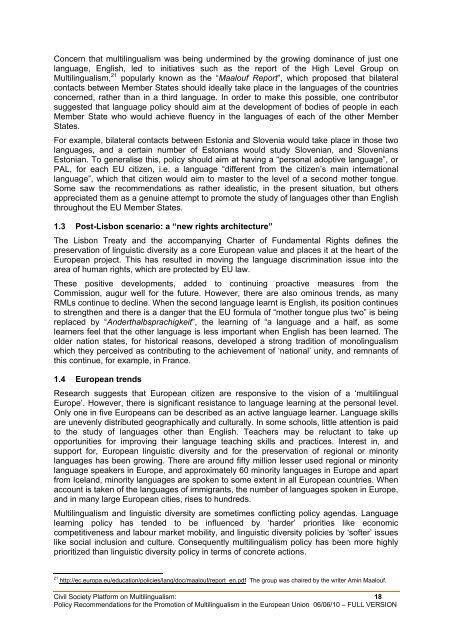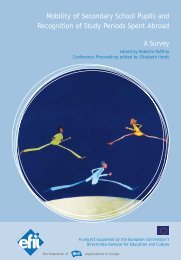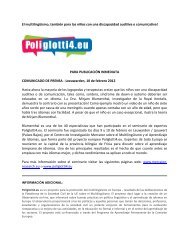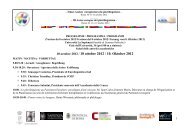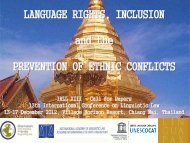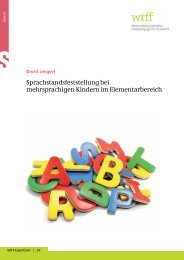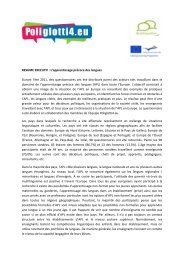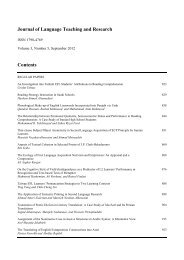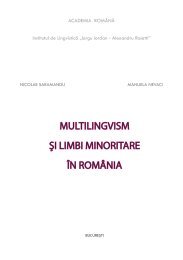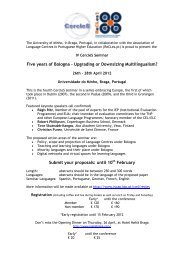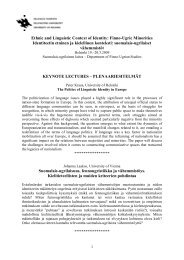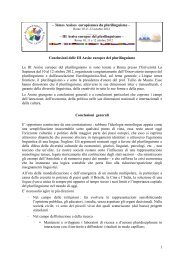FULL VERSION - European Commission - Europa
FULL VERSION - European Commission - Europa
FULL VERSION - European Commission - Europa
You also want an ePaper? Increase the reach of your titles
YUMPU automatically turns print PDFs into web optimized ePapers that Google loves.
Concern that multilingualism was being undermined by the growing dominance of just onelanguage, English, led to initiatives such as the report of the High Level Group onMultilingualism, 21 popularly known as the “Maalouf Report”, which proposed that bilateralcontacts between Member States should ideally take place in the languages of the countriesconcerned, rather than in a third language. In order to make this possible, one contributorsuggested that language policy should aim at the development of bodies of people in eachMember State who would achieve fluency in the languages of each of the other MemberStates.For example, bilateral contacts between Estonia and Slovenia would take place in those twolanguages, and a certain number of Estonians would study Slovenian, and SloveniansEstonian. To generalise this, policy should aim at having a “personal adoptive language”, orPAL, for each EU citizen, i.e. a language “different from the citizen’s main internationallanguage”, which that citizen would aim to master to the level of a second mother tongue.Some saw the recommendations as rather idealistic, in the present situation, but othersappreciated them as a genuine attempt to promote the study of languages other than Englishthroughout the EU Member States.1.3 Post-Lisbon scenario: a “new rights architecture”The Lisbon Treaty and the accompanying Charter of Fundamental Rights defines thepreservation of linguistic diversity as a core <strong>European</strong> value and places it at the heart of the<strong>European</strong> project. This has resulted in moving the language discrimination issue into thearea of human rights, which are protected by EU law.These positive developments, added to continuing proactive measures from the<strong>Commission</strong>, augur well for the future. However, there are also ominous trends, as manyRMLs continue to decline. When the second language learnt is English, its position continuesto strengthen and there is a danger that the EU formula of “mother tongue plus two” is beingreplaced by “Anderthalbsprachigkeit”, the learning of “a language and a half, as somelearners feel that the other language is less important when English has been learned. Theolder nation states, for historical reasons, developed a strong tradition of monolingualismwhich they perceived as contributing to the achievement of ‘national’ unity, and remnants ofthis continue, for example, in France.1.4 <strong>European</strong> trendsResearch suggests that <strong>European</strong> citizen are responsive to the vision of a ‘multilingualEurope’. However, there is significant resistance to language learning at the personal level.Only one in five <strong>European</strong>s can be described as an active language learner. Language skillsare unevenly distributed geographically and culturally. In some schools, little attention is paidto the study of languages other than English. Teachers may be reluctant to take upopportunities for improving their language teaching skills and practices. Interest in, andsupport for, <strong>European</strong> linguistic diversity and for the preservation of regional or minoritylanguages has been growing. There are around fifty million lesser used regional or minoritylanguage speakers in Europe, and approximately 60 minority languages in Europe and apartfrom Iceland, minority languages are spoken to some extent in all <strong>European</strong> countries. Whenaccount is taken of the languages of immigrants, the number of languages spoken in Europe,and in many large <strong>European</strong> cities, rises to hundreds.Multilingualism and linguistic diversity are sometimes conflicting policy agendas. Languagelearning policy has tended to be influenced by ‘harder’ priorities like economiccompetitiveness and labour market mobility, and linguistic diversity policies by ‘softer’ issueslike social inclusion and culture. Consequently multilingualism policy has been more highlyprioritized than linguistic diversity policy in terms of concrete actions.21http://ec.europa.eu/education/policies/lang/doc/maalouf/report_en.pdf The group was chaired by the writer Amin Maalouf.Civil Society Platform on Multilingualism: 18Policy Recommendations for the Promotion of Multilingualism in the <strong>European</strong> Union 06/06/10 – <strong>FULL</strong> <strong>VERSION</strong>


